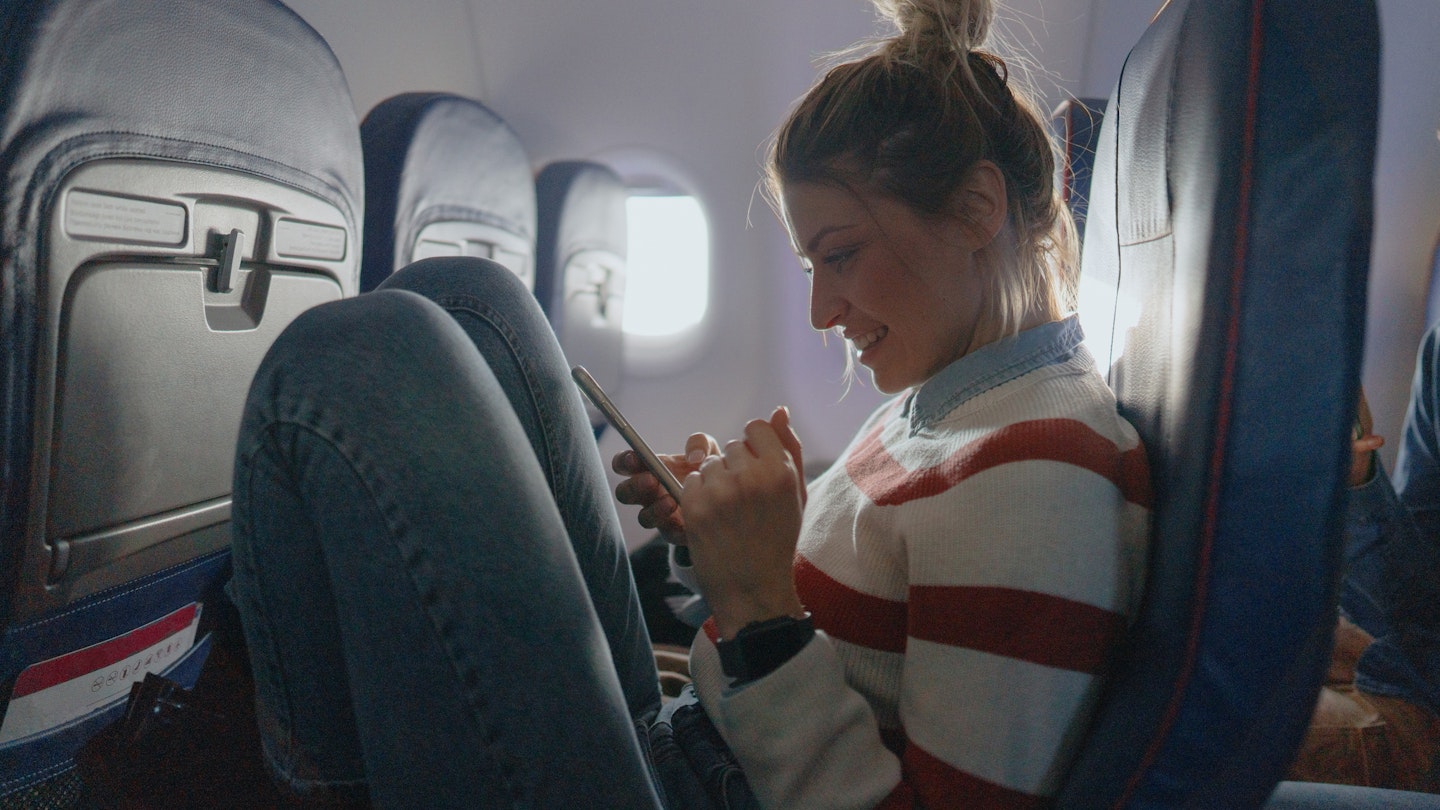5G Technology: Transforming In-Flight Connectivity for Travelers
One of the last bastions of phone-free travel is about to get connected, eliminating the need for airplane mode – at least in the European Union.
In late November, the EU announced that airlines can provide 5G technology on planes, alongside previous mobile-technology generations, allowing passengers to use their smartphones without restrictions during flights.
“5G will enable innovative services for people and growth opportunities for European companies,” said Thierry Breton, EU Commissioner for the Internal Market. “The sky is no longer a limit when it comes to possibilities offered by super-fast, high-capacity connectivity.”
The deadline for countries within the EU to make 5G frequency bands available for planes is June 30, 2023. Consequently, folks flying in the EU might be kissing digital disconnection goodbye by summertime. 5G will make all smartphone features operational during air travel.
Understanding 5G Technology
The fifth-generation mobile network, 5G, is the latest wireless standard that utilizes radio frequencies to carry information through the air. In-flight 5G service will be provided using special network equipment called “picocell,” which connects the plane’s network to the mobile network on the ground via satellite.
Once picocell technology is present on an aircraft, passengers can use their phones through their mobile data function instead of relying solely on Wi-Fi.
Airplane Mode: A Safety Measure No Longer Needed?
Airline passengers have traditionally been instructed to set phones and devices to airplane mode due to electromagnetic interference concerns with an aircraft’s navigation systems. However, the frequencies for in-flight 5G (5 GHz) differ significantly from those required for flying a plane (4.2 to 4.4 GHz), making the risk of interference minimal.
The Impact on Communication During Flights
Yes, travelers will soon be able to make calls during flights. This is great news for those needing to make emergency calls, coordinate travel plans, or contact loved ones mid-flight. However, this development may spark controversy in the airline industry, as flight attendants express concerns over potential arguments between passengers.
According to reports, the rising incidents of unruly behavior on flights have heightened these concerns. Therefore, it may be wise to keep conversations discreet and limit calls.

Streaming and In-Flight Entertainment
Passengers equipped with 5G-compatible devices should be able to download movies, podcasts, and TV shows within minutes. This means travelers will no longer be reliant on in-flight entertainment systems. However, remember to use headphones to ensure a comfortable environment for fellow passengers.
Cost of 5G Service
The cost associated with utilizing the 5G service remains to be seen; however, it is unlikely that it will be free. Travelers may incur international roaming charges if flying through foreign countries that are not covered by their service providers. Furthermore, the additional expenses incurred by airlines retrofitting planes for this technology could be passed on to passengers. Therefore, to minimize costs, consider using Wi-Fi, opting for a prepaid SIM card, or maintaining airplane mode.
The Global Shift Towards 5G in Aviation
The relationship between 5G and international air travel is complex. While not all countries use the same protocols as the EU for in-flight connectivity, many are taking steps to retrofit aircraft for a 5G-integrated future.
In regions like the US, where the 5G frequencies are closer to those utilized by aircraft, safety concerns still loom. Thus, achieving a smooth collective transition towards 5G may take time. Until then, passengers should adhere to existing guidelines and comply with requests to use airplane mode when necessary, ensuring safe and courteous flying experiences.




